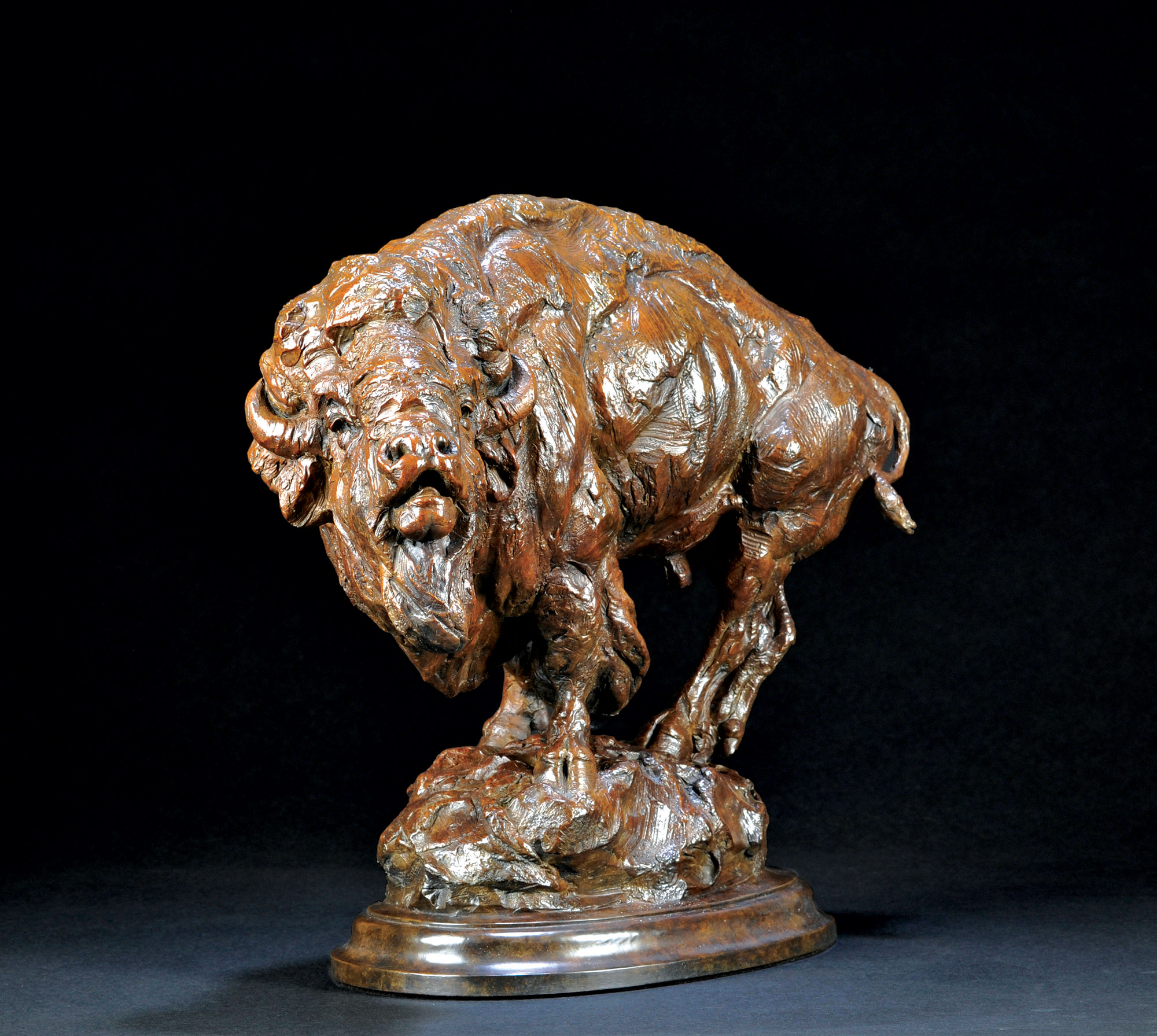
27 Nov Artist of the West: The Bronze Wildlife of Tim Shinabarger
Unbounded in bronze, free within the sharp-angled landscape, deepened by a flight-or-fight instinct, Tim Shinabarger’s sculptures never slip the knot of biology or the loose netting of time. Each piece bespeaks a narrative of the wildness of things and of a grace in the forms of nature.
“I don’t want to lose the feeling that this is a sculpture made out of clay,” Shinabarger says, standing in the foundry where he spends one week a month working on his newest bronzes. “I want that hand-feel of clay in the finished piece.”
His sculptures are distinguished by his ability to bring out an authenticity that can only come from knowing how each animal inhabits its environment: how the moose reacts to startle, how a kudu moves in a herd. Shinabarger studies the bone structure, musculature, and native landscape of each animal he works on. “The first thing I do when I design a piece — and every detail is thought out beforehand — is think about the shapes,” he says. “When I was in Zambia looking at the kudu, I watched how they got up on a big anthill to look around. Then I used that information to create a sculpture. I figure out the big shapes then I discover where the little shapes fit in.”
Making his way through the foundry, he stops at a sculpture hanging on the wall. It’s a large crag with three bighorn sheep balanced on top. There is an echo of threes, both in the ratio and the triangular shape of the rock cliff. The patinas on the sheep are much lighter than the outcrop they stand on, something a little different from Shinabarger’s past iterations, something new that reflects his thoughts on painting — another passion he holds dear.
“For me, no matter what I’m doing, the central theme is always the wilderness,” he says. “That includes the people, the animals, and the land.”
The landscape shows up in all his work: the curve of hard earth supporting a warthog, the dancer-like hooves of an elk loping across an unforgiving ground, an abstract portrayal of wet woods supporting a rutting moose. Each notation is a study of place.
Shinabarger has been with The Legacy Gallery (with locations in Scottsdale, Arizona, Bozeman, Montana, and Jackson Hole, Wyoming) for almost 25 years. Legacy’s general manager, Scott Jones, appreciates Shinabarger’s dedication to portraying all aspects of wildlife. “His understanding is deeper than just the anatomy of an animal,” Jones says. “When you look at his bronzes, people feel like they’re getting an intimate glimpse into that animal. A lot of his pieces have movement to them, which is difficult to do in bronze.”
The bronzes range from miniatures to monuments.
“I admire him simply because he can do anything,” Jones says. “He’s an avid outdoorsman, using his own reference material and his own knowledge of the animals. How they think, how they move, he captures all of that in what he does.”
When Shinabarger was in high school, he had his own taxidermy business, starting with small animals and moving on to larger ones. It is that kind of intimate knowledge of anatomy that is second nature to him, which may be why Jones notes that all of Shinabarger’s pieces are in high demand, even the ones that are no longer in circulation. “It shows he’s a consistent artist creating quality pieces.”
A few years ago, Shinabarger premiered 10 new bronzes at The Legacy Gallery. “I’ve never seen anything like it in the bronze world, in regards to the breadth of his work,” Jones says. “Right now, in the wildlife sculpture world, Tim has the most award-winning pieces out there. His sculptures are sought after by the highest caliber of collectors, and we see more and more museums going after his work.”
Shinabarger will soon have two pieces in the Museum of Wildlife Art, located in Jackson, Wyoming. He’s won numerous prestigious awards including the Prix de West Invitational Wildlife Award in 2014, and the Prix de West Sculpture Award in 2010. A monumental version of “Black Timber Bugler” will be installed at the C.M. Russell Museum in 2017.
Shinabarger is excited about the museum’s new acquisition. “I was born in Great Falls and my first exposure to any kind of art that I can remember was at the C.M. Russell Museum,” he says.
Walking through the foundry, Shinabarger first stops to visit Con Williams, an artist and sculptor in his own right. Williams is in charge of making the molds, which are stacked on shelves all around the room. The polyurethane molds are made from the initial clay (or wax) sculpture brought into the foundry by the artist. Williams is careful to notice where cuts need to be made on the bigger pieces in order to successfully cast a piece. He paints plastic around the original, then surrounds it with plaster until the polyurethane is set.
“That holds the shape,” Shinabarger says. “And the clay part is done. It can be reused. The polyurethane mold belongs to the artist.”
In the wax room, a model is made by applying four or five coats of heated wax onto the rubber mold, making a positive image of the sculpture. At that point it goes into the wax chasing room, where the wax model is examined for flaws and repaired. Then wax rods are attached to allow the bronze to flow in and the air to escape when the wax is melted out of the shell.
Stopping to talk with two women bent over their wax work, Shinabarger pulls a photo file out to examine the progress so far. A meticulous book is kept for each sculpture.
Next, a ceramic shell is made by dipping the wax model into a sandy slurry. After it hardens, the wax is then melted out, leaving a hollow negative of the sculpture. Molten bronze, heated in a furnace to about 2,100 degrees, is poured into heated ceramic shells. When the bronze cools, the ceramic shell is chipped away. All the pieces are then sent to artisans who chase the metal, using pneumatic tools and welders to make the sculpture whole again. At that point it goes into a sand blaster and finally to the patina room.
Patinas create the colors of the final piece. After the patina has been applied, a coat sealant keeps the color just right. On the wall behind Shinabarger there are dozens of tiles with colors from deep brown to coppery greens and burnt reds. A chemical palette.
“Every time I come here I go through the whole process, find any flaws, and help touch it up,” Shinabarger says, picking up a tabletop sized sculpture. The moose paws at the ground and his enormous antlers angle toward the light. “I also approve all the patinas and I ship from here as well. The rest of the time I’m in my studio and I’m checked out.”
At any one time, Shinabarger has between 20 and 25 pieces in active circulation.
Collector Ed Wright first started following Shinabarger’s work more than 20 years ago, and he’s bought at least one piece every year since.
“I collect wildlife art and the owner of The Legacy Gallery introduced me to Tim’s bronze work decades ago,” Wright says. “I dearly loved one of his paintings, which I still love. Then I got interested in his bronze work. I became fascinated by the way he manipulates the clay; I found every animal to be anatomically correct. That appeals to me.”
Wright appreciates the fact that Shinabarger goes out in the field to study his subjects, which he says gives the artist the ability to capture, not just the animal, but the animal’s environment as well. “That’s what turned me on — good work and his being true to the animal,” Wright says. “A lot of artists are studio artists, but he really goes out there to understand the whole picture.”
At the end of the week, Shinabarger returns to his studio near Billings, the softened clay waiting for him. “I used to paint a lot and do field studies when I was thinking about a piece. Now I take a camera, a video cam, and my sketchbook,” Shinabarger says. “After I have an idea, I’ll do anything to get close enough to the animal to really study it. Once I traveled to Anchorage just to watch a polar bear.”
He reaches out, running his hand along one of his pieces with a fresh patina. His fingers follow the impressions he’d made earlier in the clay. Although he’s probably done dozens of figures, each one tells a new story.
“I look at the relationships between bone and muscles, where the animal lives, and what’s going on,” he says. “It’s important for me to get past the main things to see the subtleties. And then, how am I going to create the illusion of movement, and the light to hit in an energized way?”
Without losing the form, and careful not to let the mechanics of the animal overwhelm his work, Shinabarger always keeps the “why” of the piece in the forefront of his mind. Perhaps that’s the reason his sculptures speak to people — those familiar with the animals as well as those attracted by the honesty of the work.
- “The Mountaineers” | Bronze | 48 x 23 x 10 inches
- “Track of the Silvertip” | Bronze | 14 x 27 x 11 inches
- Beargrass and Blossoms | Bronze | 59 x 40 x 38 inches
- “Old Man of the Sage” | Bronze | 16 x 17.5 x 10 inches
- “An Apple a Day” | Bronze | 18.5 x 13 x 9 inches
- “Woodland Bull” | Bronze | 28 x 24 x 9 inches
- Fly Swatter | Bronze | 14.5 x 18 x 12 inches




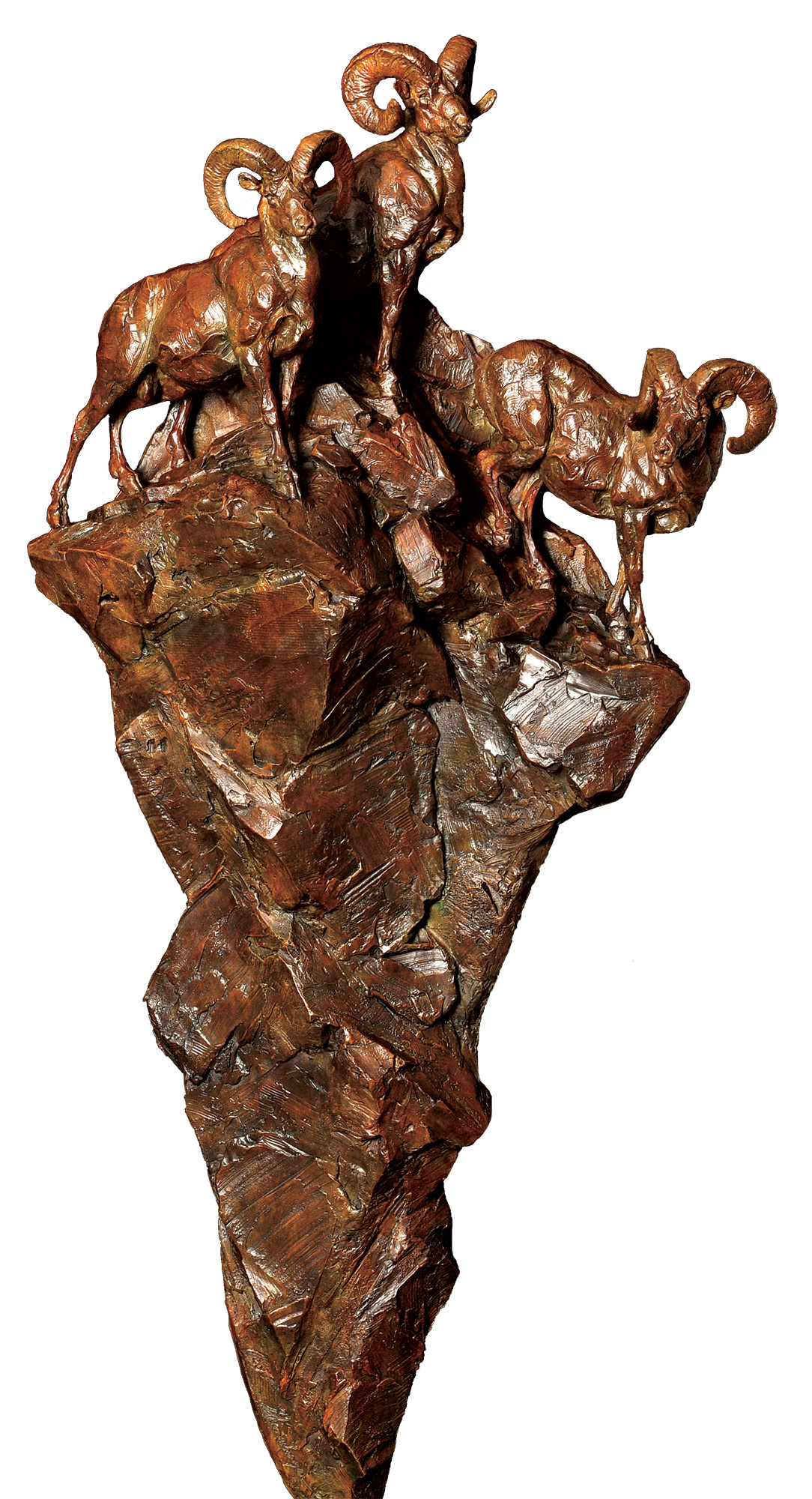
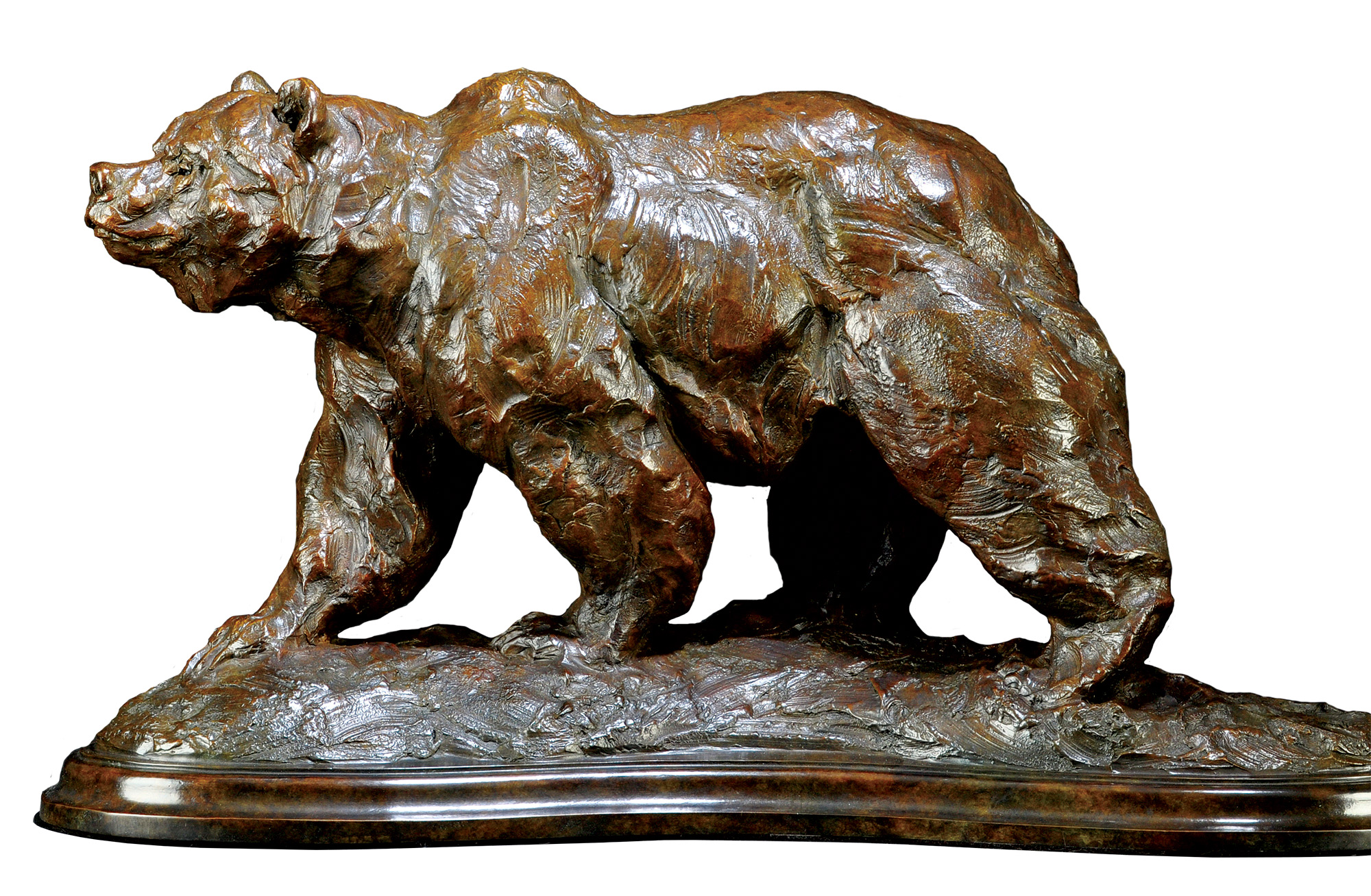
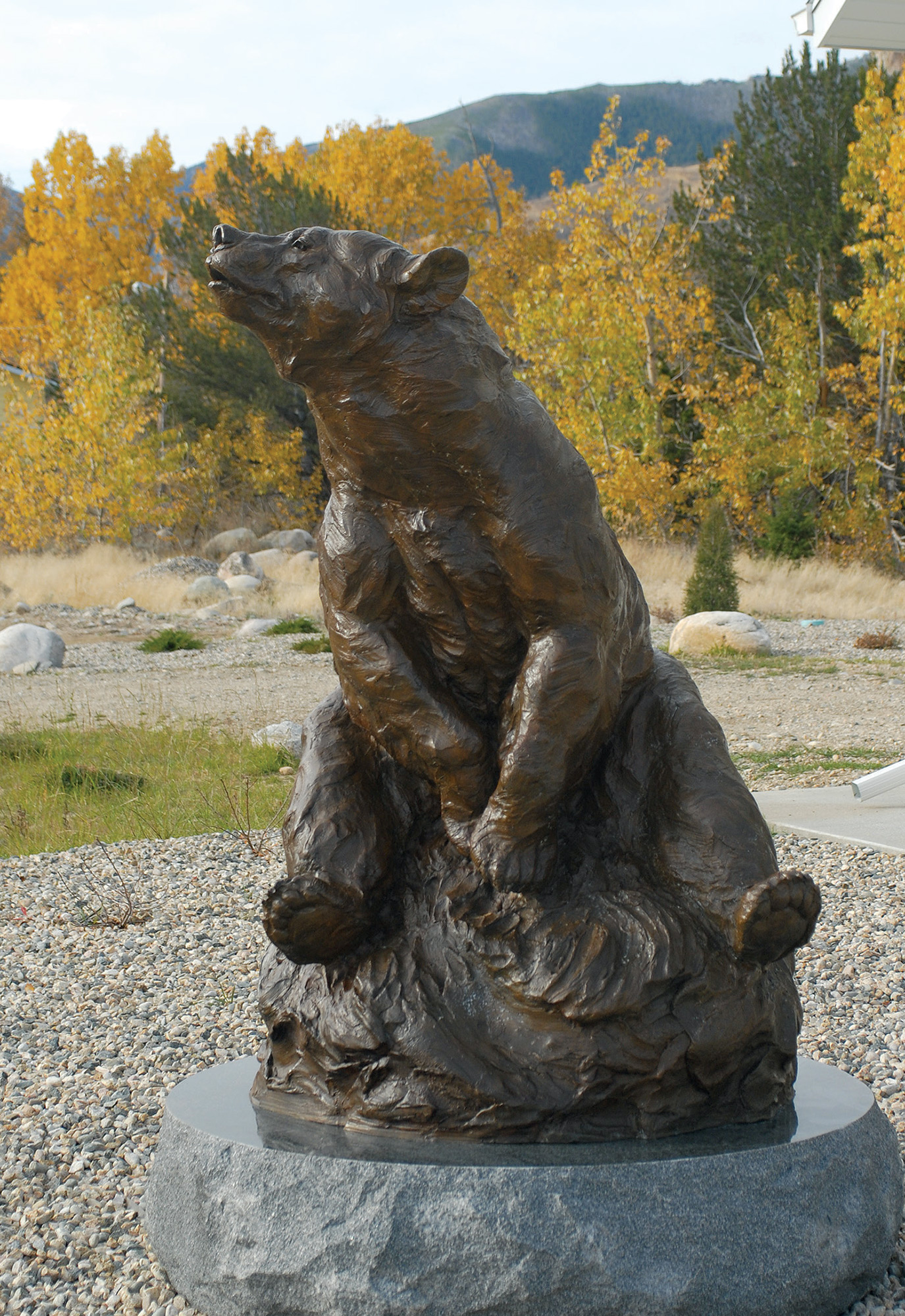

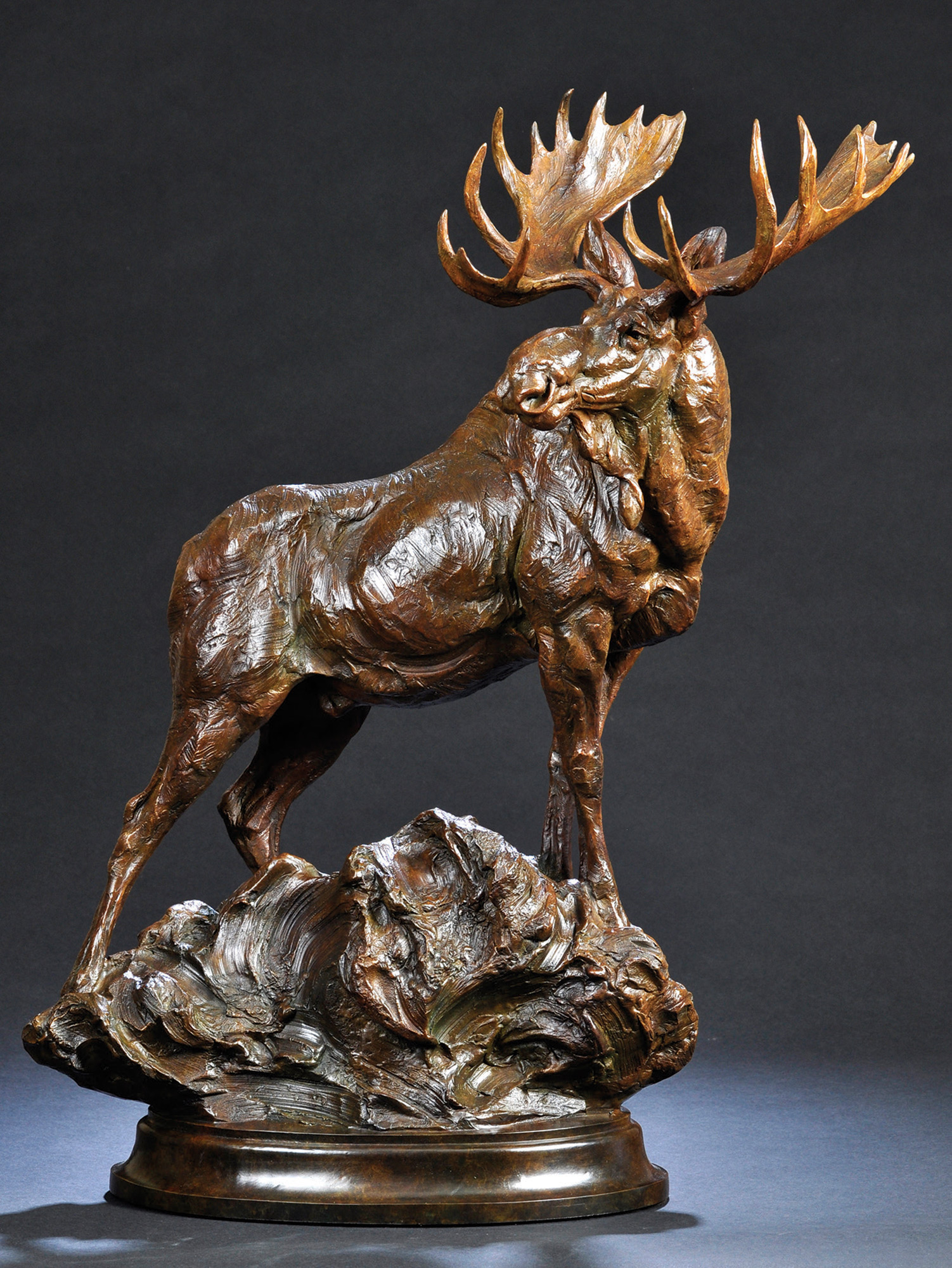
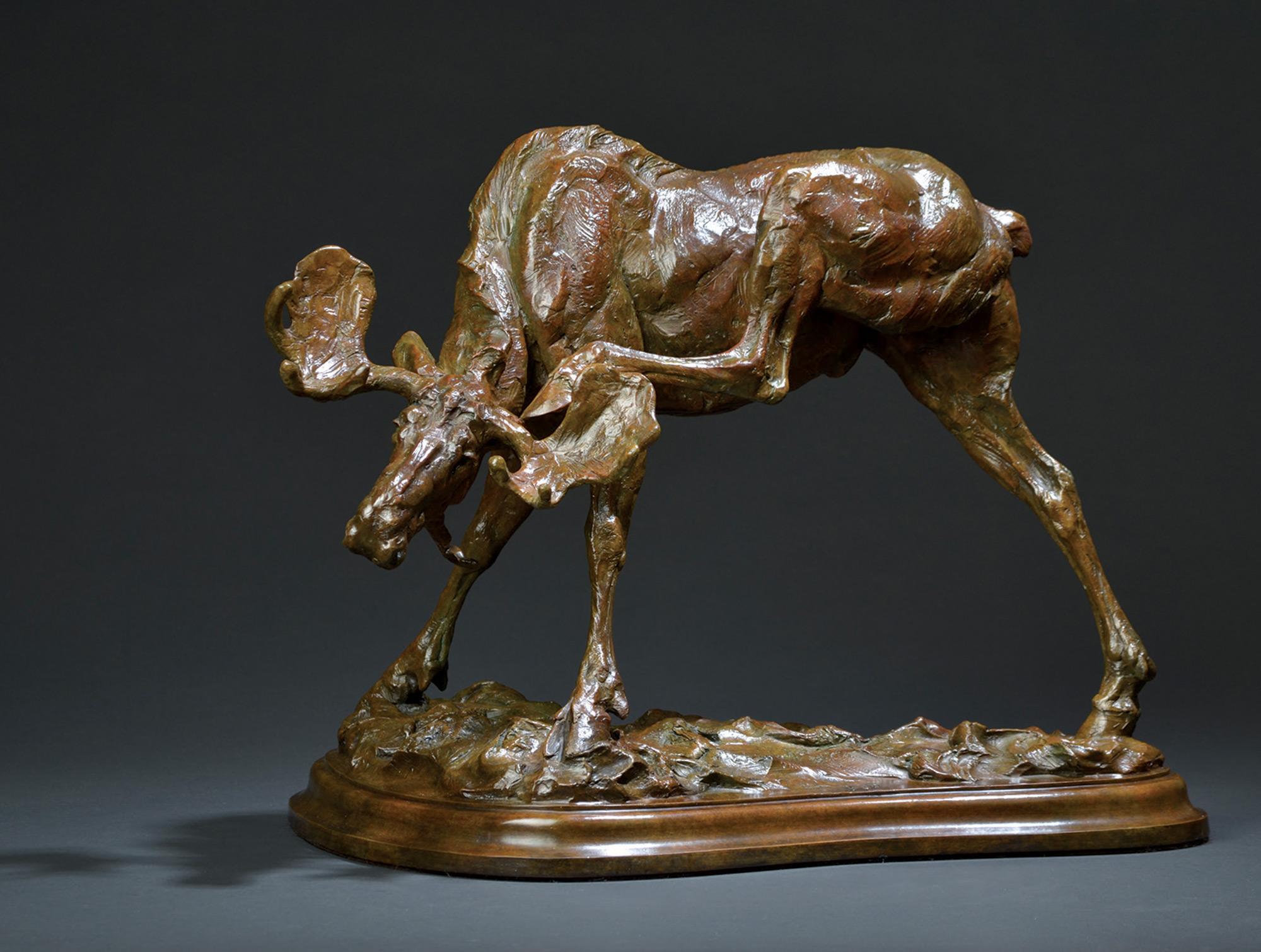
No Comments